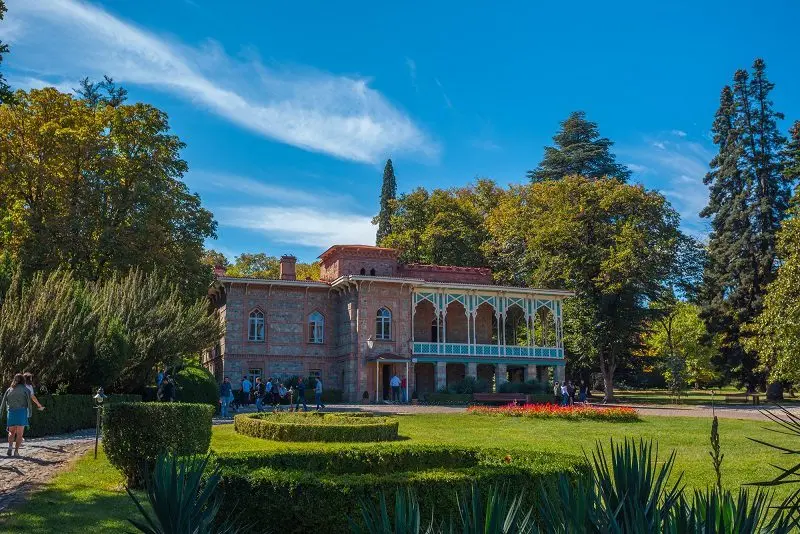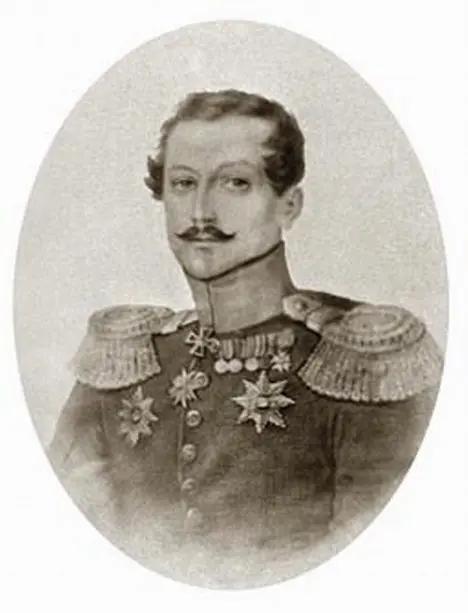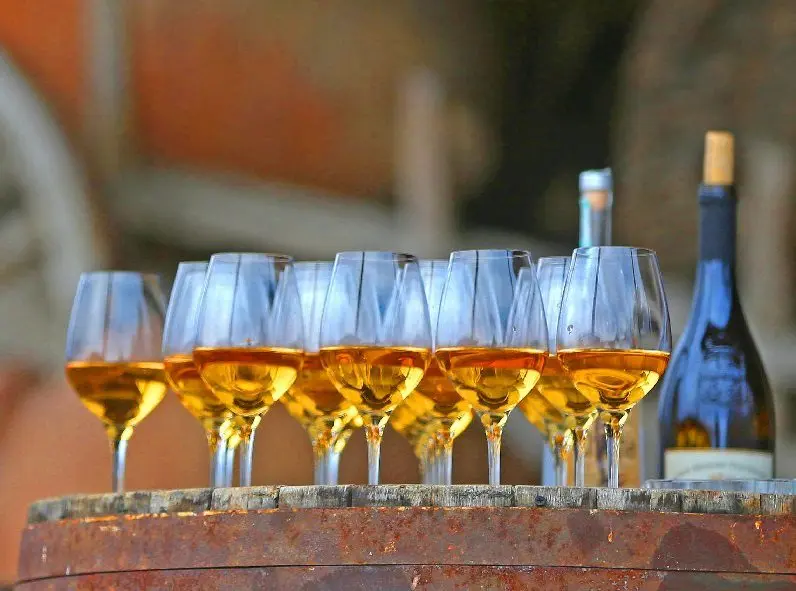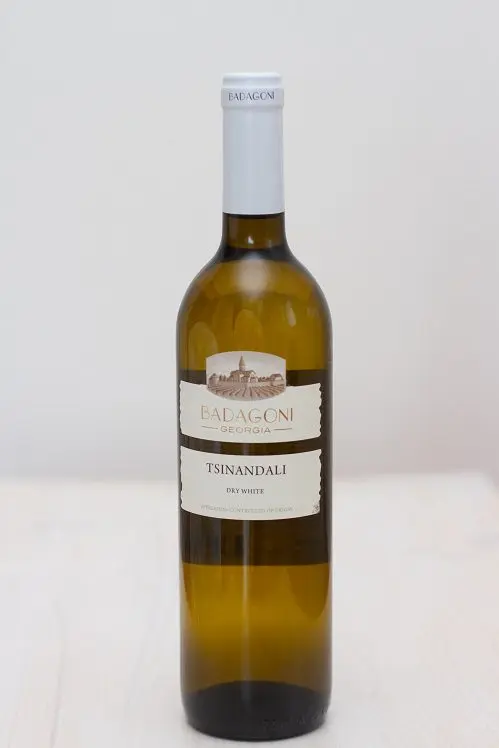Contents
Tsinandali (ტვიშიწინანდალი) is a dry white wine originally from Georgia. Unlike many other brands, it is not named for the grape variety, but for the place of origin. Berries of autochthonous Georgian varieties Rkatsiteli (80%) and Mtsvane (20%) are used as raw materials for this drink.
Map
Tsinandali wine is a name protected by origin. The drink is produced in the Kakheti region, namely in the villages of Akura, Vanta, Busheti, Kvemo Khodasheni, Tsinandali, Kisiskhevi, Kondoli, Nasamakhali, Shalauri, Kurgdelauri, Vardisubani, Gulgula, Ikalto, Ruishpiri.
The Tsinandali appellation is located on the right bank of the Alazani River, directly opposite the Kindzmarauli region on the left bank.
History
The name of the brand comes from the name of the Georgian estate, which belonged to Prince Alexander Chavchavadze. The Tsinandali estate is considered the cradle of modern Georgian winemaking, it was here that the first bottles of Saperavi were produced in 1841, and Tsinandali wine appeared in 1886. The winery opened here in the XNUMXth century still functions today.

A distinctive feature of the region is the combination of modern technologies with ancient traditions of winemaking. For example, fermented grape juice is still aged here in qvevri jugs dug into the ground, but fermentation takes place with the help of high-tech equipment in stainless steel vats.
Alexander Chavchavadze
The Georgian prince – the founder of the Tsinandali winery – was an extraordinary person. The minion of fate, the godson of Catherine II, even in his youth, a nobleman, wishing to restore the Georgian kingdom, took part in the uprising near Ananur, but did not suffer serious punishment for this. On the contrary, a few years later the young prince again shone in high society and enjoyed the position of adjutant under the Marquis Paulucci.

Alexander Chavchavadze succeeded in everything – he was an officer, an interesting conversationalist, a poet, a father of three daughters and Griboedov’s father-in-law. It is not surprising that when the young general was tired of military exploits and decided to take up winemaking, this venture was also crowned with success.
The prince approached the matter seriously: he invited winemakers from France, studied modern technologies at that time, personally dealt with vines and cultivated the land. The result was a famous winery, and the heritage of the Georgian nobleman can be studied in his house-museum – the Tsinandali estate. The pearl of the collection is a rich vinotheque, consisting of wines bottled over 100 years ago.
Characteristics of Tsinandali wine
Traditionally, Tsinandali is fermented at low temperatures (10-12 degrees) and aged from two to seven years, the sugar content of the berries reaches about 19%. The result is a light-bodied straw-colored wine with a strength of 10.5%.

The bouquet of the drink is dominated by floral notes, nuances of citruses, tropical plants, ripe peach are felt. Some wine critics note green apple tones, spices, and fresh pastries in the taste. The acidity is moderate, the wine has a delicate aftertaste with a light pumpkin aroma.
In blind tastings and according to famous sommeliers, Tsinandali wine invariably scores 87-88 points out of 100, and receives gold and silver medals at international competitions.
How to drink Tsinandali
Like other white wines with similar characteristics, Tsinandali is recommended to be chilled to 8-10 degrees before serving, and the storage temperature should be between 5-16 degrees Celsius.

The wine forms successful gastronomic pairs with fish dishes, poultry, vegetable salads, cheese, but connoisseurs recommend not having a snack on Tsinandali in order to get a good feel for its delicate bouquet.
Famous brands
The main producer of Tsinandali is, of course, the winery named after Alexander Chavchavadze.

But the company does not have a monopoly on the brand, there are other companies that supply this white wine to the market:
- Askaneli Brothers;
- Dawn of Kakheti;
- Badagoni;
- Telavi wine cellar;
- Tbilgvino;
- House of Georgian wine, etc.









